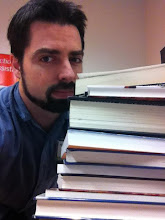Science!
Kean’s newest nonfiction book traces the history of DNA, from humankind’s earliest attempts to understand how life develops through to the implications of working with the recently unzipped human genome. There’s plenty of hard science that introduces the structure and inner workings of chromosomes, but the book is definitely written for the layperson.
Much like Mary Roach’s works, The Violinist’s Thumb is divided into thematic chapters that are composed of related vignettes that range from fascinating and tragic to offbeat and absurd. These vignettes tend to connect to and reference each other, due to the generally linear progression of scientific breakthroughs related to DNA. While the book doesn’t qualify as narrative nonfiction, I got a clear sense of a solid beginning, plenty of harrowing adventures in the middle, and an ambiguously open ending.
The stories in each section range far and wide in their subject matter, from mystery illnesses and scientific scandals to frog sex and microscopic sculptures. In short, it delivered everything I want from science nonfiction: plenty of offbeat curiosities and humorous asides to give context to complex, genuinely interesting scientific information. Kean writes simply and offers plenty of casual (and occasional acerbic) editorials, which occasionally come off as one-liners but still keep the more data-driven sections from seeming too much like a textbook.
There is enough simplification and use of weasel words to annoy readers who are already well-versed in the subject matter, but it’s absolutely perfect for someone like me: eternally interested in science, but not all that adept with the lingo or basic theory. After finishing this book, I’ve been casually perusing articles and videos on molecular biology, which says almost everything I need to about it. Thankfully, Kean includes a meaty reference list with plenty of suggestions for what to read next on the subject. As mentioned above, a few of the chapters may be a little hard to follow for people without a science background, but this is a must-read for anybody who has even a passing interest in what DNA is, how it works, and how our understanding of it has evolved and affected almost everything we do. There is more than enough compelling human drama in these pages to offset the strings of As, Cs, Gs, and Ts.
Verdict: 5 / 5
Tuesday, September 4, 2012
Subscribe to:
Post Comments (Atom)


No comments:
Post a Comment